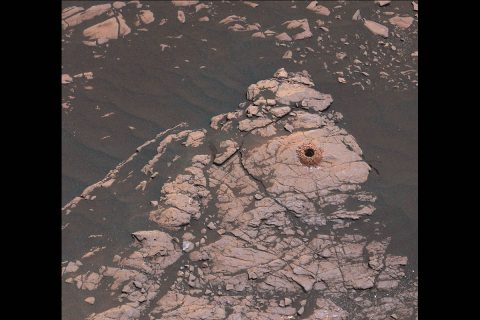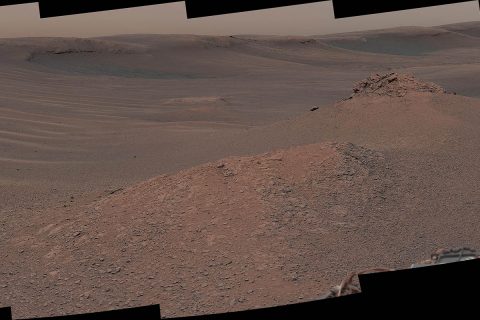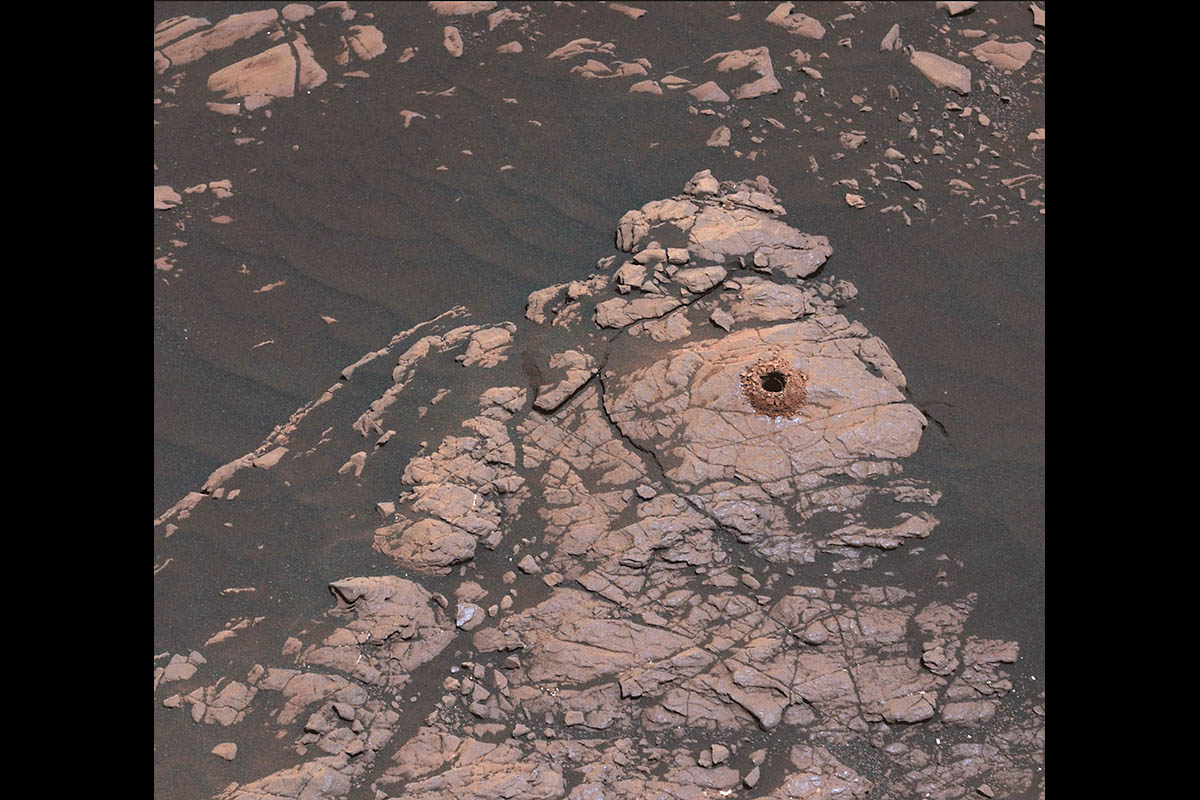NASA Jet Propulsion Laboratory
 Pasadena, CA – Scientists working with NASA’s Curiosity Mars rover have been excited to explore a region called “the clay-bearing unit” since before the spacecraft launched. Now, the rover has finally tasted its first sample from this part of Mount Sharp. Curiosity drilled a piece of bedrock nicknamed “Aberlady” on Saturday, April 6th, 2019 (the 2,370th Martian day, or sol, of the mission), and delivered the sample to its internal mineralogy lab on Wednesday, April 10th (Sol 2374).
Pasadena, CA – Scientists working with NASA’s Curiosity Mars rover have been excited to explore a region called “the clay-bearing unit” since before the spacecraft launched. Now, the rover has finally tasted its first sample from this part of Mount Sharp. Curiosity drilled a piece of bedrock nicknamed “Aberlady” on Saturday, April 6th, 2019 (the 2,370th Martian day, or sol, of the mission), and delivered the sample to its internal mineralogy lab on Wednesday, April 10th (Sol 2374).
The rover’s drill chewed easily through the rock, unlike some of the tougher targets it faced nearby on Vera Rubin Ridge.

It was so soft, in fact, that the drill didn’t need to use its percussive technique, which is helpful for snagging samples from harder rock.
This was the mission’s first sample obtained using only rotation of the drill bit.
“Curiosity has been on the road for nearly seven years,” said Curiosity Project Manager Jim Erickson of NASA’s Jet Propulsion Laboratory in Pasadena, California. “Finally drilling at the clay-bearing unit is a major milestone in our journey up Mount Sharp.”
Scientists are eager to analyze the sample for traces of clay minerals because they usually form in water. NASA’s Mars Reconnaissance Orbiter (MRO) spied a strong clay “signal” here long before Curiosity landed in 2012.

Pinpointing the source of that signal could help the science team understand if a wetter Martian era shaped this layer of Mount Sharp, the 3-mile-tall (5-kilometer-tall) mountain Curiosity has been climbing.
Curiosity has discovered clay minerals in mudstones all along its journey. These mudstones formed as river sediment settled within ancient lakes nearly 3.5 billion years ago. As with water elsewhere on Mars, the lakes eventually dried up.
“Each layer of this mountain is a puzzle piece,” said Curiosity Project Scientist Ashwin Vasavada of JPL. “They each hold clues to a different era in Martian history. We’re excited to see what this first sample tells us about the ancient environment, especially about water.”
The Aberlady sample will give the team a starting point for thinking about the clay-bearing unit. They plan to drill several more times over the course of the next year. That will help them understand what makes this region different from the ridge behind it and an area with a sulfate signal up higher on the mountain.
More information about Curiosity is at:
More information about Mars is at:



